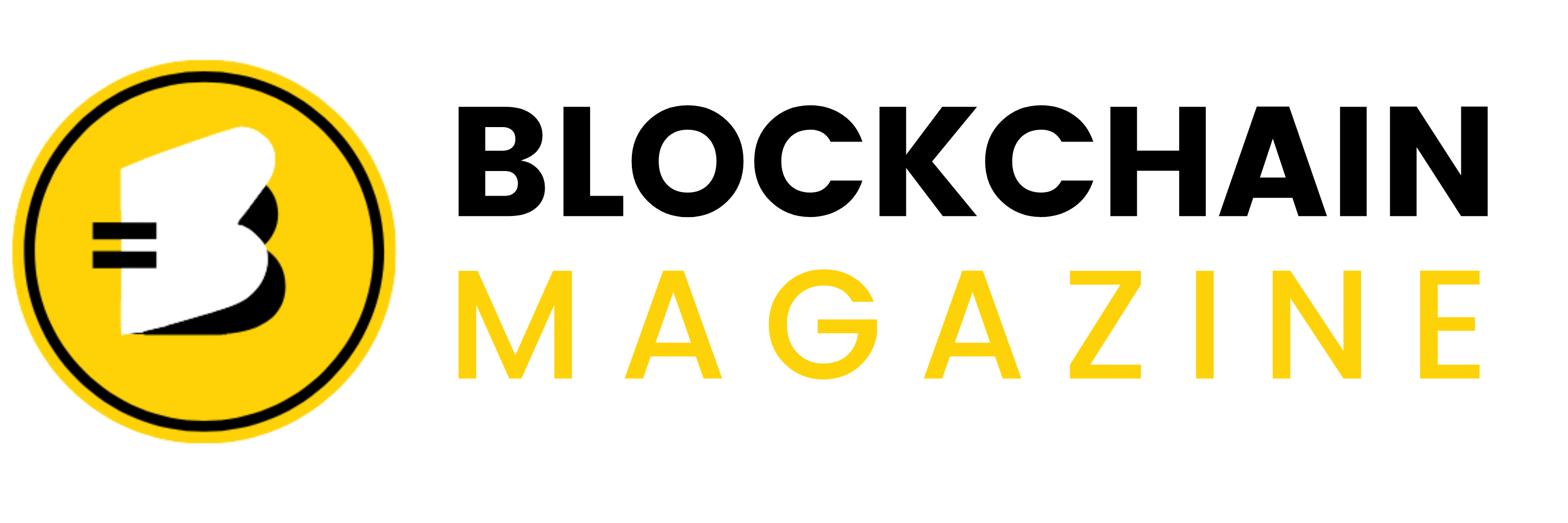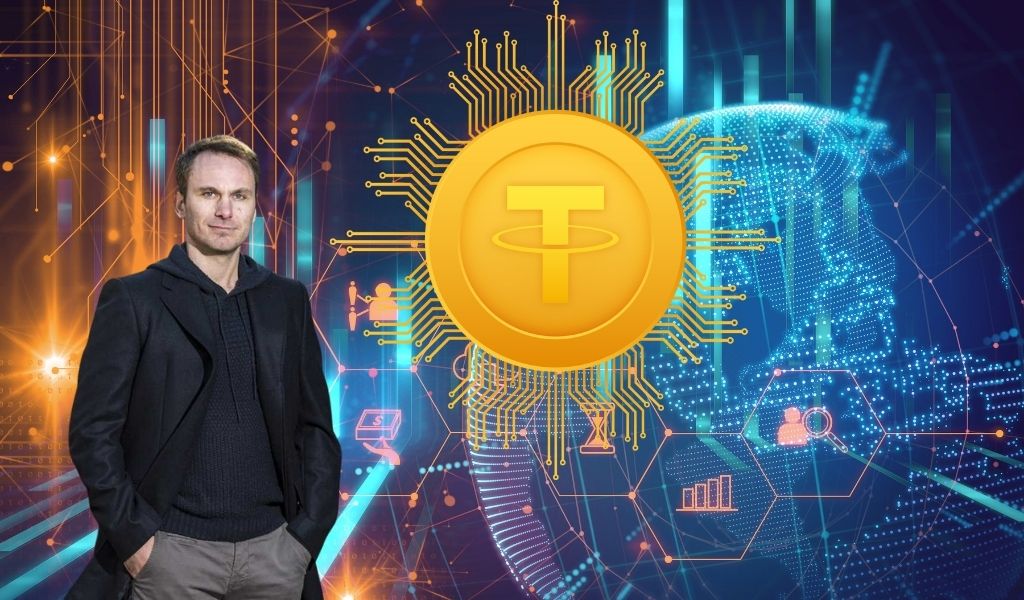How Polkadot Crypto (DOT) is Enabling a Decentralized Multi-Chain Future?
Polkadot crypto is shaking things up in the blockchain world. It’s not just another cryptocurrency; it’s a whole ecosystem that connects different blockchains. Imagine being able to transfer data and assets across different platforms seamlessly. That’s what Polkadot is all about. Founded by Dr. Gavin Wood, one of the brains behind Ethereum, Polkadot is all about making blockchains more scalable and interoperable. Let’s dive into how Polkadot is paving the way for a decentralized multi-chain future.
Key Takeaways
- Polkadot’s unique architecture links multiple blockchains, enhancing scalability and interoperability.
- The governance model of Polkadot encourages community involvement, boosting adoption and growth.
- Polkadot’s shared security model provides robust protection across connected chains, lowering entry barriers for new projects.
- Cross-chain communication in Polkadot opens up new possibilities for blockchain innovation and collaboration.
- Future developments in Polkadot’s technology promise to further strengthen its position in the blockchain industry.
Understanding Polkadot’s Multi-Chain Architecture
The Role of the Relay Chain
At the core of Polkadot’s design is the relay chain. Think of it as the backbone of the network, handling the heavy lifting of security and consensus. It doesn’t do much else, which is actually a good thing! This simplicity allows the relay chain to focus on making sure everything runs smoothly across the network. Shared security is its big selling point, letting different blockchains, or parachains, plug into this central hub and benefit from a pooled security model. This means less hassle for individual chains, which don’t need to fend for themselves security-wise.
How Parachains Enhance Scalability
Parachains are like independent blockchains that connect to the relay chain. They can have their own rules, tokens, and governance, but they all share the security provided by the relay chain. This setup not only makes them scalable but also incredibly flexible. Parachains can process transactions simultaneously, reducing congestion and improving overall network performance. It’s like having multiple lanes on a highway instead of just one.
Bridges and Cross-Chain Communication
Bridges in Polkadot are special parachains that connect with external blockchains, like Bitcoin or Ethereum. This allows for two-way communication and transactions between different blockchains, broadening the scope of interoperability. The network uses something called Cross-Chain Message Passing (XCMP) to enable this communication. It’s a bit like a universal translator for blockchains, letting them “talk” to each other without a hitch. This means assets and data can move freely across the network, making Polkadot a truly interconnected ecosystem.
The Governance Model of Polkadot Crypto
Stakeholder Participation and Decision-Making
Polkadot’s governance model is all about inclusivity and flexibility. It gives stakeholders a real say in how the network evolves. Everyone from developers to regular token holders can propose changes or vote on proposals. This means that the network isn’t just run by a few people at the top but by the entire community. This democratic approach ensures that everyone has a voice, and it helps keep the network fresh and aligned with what users actually want.
Future Enhancements in Governance
As Polkadot grows, its governance system is set to adapt and evolve. The platform is designed to handle changes without needing hard forks, which is pretty cool. This adaptability is vital in a fast-moving tech landscape. With more projects launching on Polkadot, the governance system will likely continue to improve, making it more robust and responsive to the needs of its users.
Impact on Community Engagement
The governance model of Polkadot doesn’t just keep the network running smoothly; it also boosts community engagement. By allowing stakeholders to participate in decision-making, Polkadot fosters a sense of ownership and involvement. This engagement is crucial for the network’s long-term success, as it encourages more people to get involved and contribute to the ecosystem’s growth. It’s a win-win for both the network and its users.
Polkadot’s governance system is like a living organism, constantly adapting and evolving with input from its diverse community. It’s a model for how decentralized networks can thrive and grow.
Scalability and Security in Polkadot’s Ecosystem
Shared Security Model Explained
Polkadot’s security framework is pretty unique. It uses something called a shared security model, where the main Relay Chain provides protection to all the parachains linked to it. This setup means individual chains don’t have to worry about their own security measures, which can be a big relief for smaller networks. Pooling security like this not only makes the system more robust but also lowers the risk of attacks. This collective approach to security is one of the reasons why Polkadot is seen as a strong player in the blockchain world.
Scalability Through Parallel Processing
Scalability is another area where Polkadot shines. Unlike traditional blockchains that process transactions one after another, Polkadot can handle multiple transactions simultaneously across its parachains. This parallel processing boosts the network’s transaction capacity, which is crucial for reducing congestion and lowering fees. It’s a game-changer, especially when compared to older blockchains like Bitcoin and Ethereum that often struggle with these issues.
Addressing Network Congestion
Polkadot addresses network congestion by leveraging its ability to process transactions in parallel across different chains. This means that during peak times, when transaction volumes are high, the network can still function smoothly without bottlenecks. Here’s a simple breakdown of how Polkadot manages this:
- Parallel Processing: Multiple chains handle transactions at the same time, increasing overall capacity.
- Efficient Resource Use: By spreading the load, the network uses resources more effectively.
- Lower Fees: With more transactions processed at once, users experience lower transaction costs.
Polkadot’s approach to scalability and security is setting the stage for a new era of blockchain technology. By integrating these features, it not only meets current demands but is also poised for future growth and innovation. For more on how Polkadot is leading the way, check out its 2025 roadmap focusing on EVM compatibility and other advancements.
Interoperability: Connecting Blockchains with Polkadot
Cross-Chain Message Passing (XCMP)
Polkadot’s Cross-Chain Message Passing (XCMP) is a game-changer in blockchain communication. It allows different blockchains to talk to each other directly and securely. This means that data and assets can move freely across various chains without needing a middleman. XCMP is a key part of Polkadot’s interoperability strategy, making it possible for different blockchain systems to work together smoothly.
Benefits of Blockchain Interoperability
Interoperability in blockchain isn’t just a technical feature; it’s a necessity. Here are some reasons why:
- Efficiency Boost: By allowing different systems to share resources, operational costs are reduced, and transaction speeds increase.
- Innovation Opportunities: Developers can create apps that use features from multiple blockchains, leading to new services and products.
- Robustness and Resilience: An interconnected system can handle failures better, distribute workloads, and avoid single points of failure.
Real-World Applications of Interoperability
The benefits of interoperability are already visible in real-world applications:
- Supply Chain Management: Different blockchains can work together to automate and streamline processes.
- Financial Services: Cross-chain transactions can be done without centralized exchanges, reducing risk and cost.
- Decentralized Applications: Apps can leverage capabilities from various blockchains, offering more comprehensive services.
Polkadot’s approach to connecting blockchains is setting the stage for a more interconnected and efficient digital economy. As more blockchains join this network, the potential for innovation and collaboration grows exponentially.
Polkadot’s Impact on Blockchain Innovation
Driving Decentralized Finance (DeFi)
Polkadot is making waves in the decentralized finance world by offering a platform that supports multiple chains. This setup allows DeFi projects to operate more efficiently, avoiding the bottlenecks seen in older blockchains like Ethereum. By enabling parallel processing through parachains, Polkadot significantly boosts transaction throughput, which is crucial for DeFi applications that require fast and reliable transactions. This capability is attracting a lot of attention from developers looking to build the next big DeFi application.
Facilitating Enterprise Solutions
Businesses are starting to see the potential of Polkadot for creating more secure and scalable blockchain solutions. Polkadot’s architecture allows companies to maintain private chains for sensitive data while still interacting with public chains. This flexibility is particularly appealing in industries like finance and healthcare, where data privacy is paramount. With Polkadot, enterprises can have the best of both worlds—security and scalability.
Enhancing Blockchain Adoption
Polkadot’s unique approach to interoperability is a game-changer for blockchain adoption. By allowing different blockchains to communicate seamlessly, Polkadot opens up new possibilities for applications that can operate across multiple networks. This interoperability not only enhances the functionality of existing blockchain systems but also paves the way for innovative applications that were previously not possible. As a result, Polkadot is playing a key role in driving the broader adoption of blockchain technology across various sectors.
Polkadot is not just another blockchain; it’s a vision for a decentralized future where multiple chains work together harmoniously. This approach is setting new standards for what blockchain technology can achieve.
In conclusion, Polkadot’s impact on blockchain innovation is profound, offering solutions that address the limitations of traditional blockchains. As Lightchain AI emerges as a potential competitor, leveraging unique blockchain solutions, the landscape of blockchain interoperability and innovation continues to evolve.
Future Developments and Potential of Polkadot
Upcoming Enhancements in Parachain Technology
Polkadot’s parachain technology is gearing up for some major upgrades. These parachains are like individual blockchains that run alongside each other, all within the Polkadot network. They use the shared security of the Relay Chain, which is a big deal for keeping things safe and sound. The ongoing work to improve parachain tech aims to boost scalability and make different blockchains work better together. This is super important for rolling out complex apps that need to handle a lot of data and transactions.
The Role of Polkadot in Web3
Web3 is all about a new, decentralized version of the internet, and Polkadot is right in the middle of it. By connecting different blockchains, Polkadot helps create a more open and interconnected digital world. This setup allows for seamless data sharing and communication between different networks, which is key for building the next generation of web services. As Web3 continues to grow, Polkadot’s role in supporting this ecosystem will likely expand, making it a cornerstone of the decentralized web.
Potential Challenges and Solutions
Of course, there are hurdles to overcome. One big challenge is ensuring that all these different blockchains can talk to each other smoothly. Polkadot’s working on this with its Cross-Chain Message Passing (XCMP) system. This tech lets parachains communicate directly, cutting down on delays and improving efficiency. Another issue is network congestion, especially as more users and apps join the network. By processing transactions on multiple parallel chains, Polkadot aims to keep things running smoothly, even when traffic spikes.
As Polkadot continues to evolve, its potential to reshape the blockchain landscape is immense. With its ongoing developments, Polkadot is not just keeping pace with the industry’s demands but is setting the stage for future innovations. This forward-thinking approach positions Polkadot as a key player in the blockchain world, ready to tackle the challenges of tomorrow.
Real-World Implementations of Polkadot
Case Studies of Polkadot Adoption
Polkadot is making waves in various sectors, and its real-world applications showcase its versatility. Acala, a prominent DeFi hub, is a prime example. Built on Polkadot, Acala offers a suite of financial services, including a trustless staking derivative and a multi-collateralized stablecoin. By leveraging Polkadot’s infrastructure, Acala achieves high transaction throughput and seamless interoperability with other blockchains, which is crucial for DeFi platforms that demand quick and reliable transactions.
Another noteworthy case is Kusama, often referred to as Polkadot’s “canary network.” Kusama serves as a testing ground, allowing developers to experiment with new features and assess their performance in a real-world setting before deploying on Polkadot. This ensures that only the most robust applications make it to the main network, maintaining Polkadot’s integrity and security.
Industry-Specific Applications
Polkadot’s technology is being explored in sectors like finance, healthcare, and supply chain management. Its ability to connect both public and private chains means businesses can maintain private, permissioned chains for sensitive data while interacting with public blockchains for wider processes. This is particularly important in industries where data privacy and security are paramount.
- Finance: Polkadot enables secure, scalable financial transactions across different blockchains.
- Healthcare: Offers a framework for secure patient data management, ensuring privacy while allowing necessary data exchange.
- Supply Chain: Facilitates transparent tracking and verification of goods across global supply networks.
Lessons Learned from Implementations
Implementing Polkadot in real-world scenarios has provided several insights:
- Scalability: By using parachains, Polkadot significantly enhances transaction capacity, addressing congestion issues faced by older blockchains.
- Security: The shared security model reduces entry barriers for new blockchains, promoting a diverse ecosystem.
- Interoperability: Its ability to connect various blockchains fosters innovation and adoption across different sectors.
The journey of Polkadot in real-world applications is just beginning, but its potential to reshape industries is evident. By offering a robust, flexible framework, Polkadot is paving the way for a more interconnected and efficient blockchain ecosystem.
Final Say
So, wrapping it all up, Polkadot is really shaking things up in the blockchain world. It’s not just another crypto project; it’s a whole new way of thinking about how blockchains can work together. By letting different blockchains talk to each other and share security, Polkadot is making it easier for new projects to get started without having to worry about building everything from scratch. This means more innovation and faster growth in the crypto space. Plus, with its flexible governance model, everyone involved gets a say in how things move forward, which is pretty cool. As more people and projects jump on board, Polkadot is set to become a major player in the future of decentralized tech. It’s like the glue that’s holding the future of blockchain together, making sure everything runs smoothly and securely.
Frequently Asked Questions
What is Polkadot’s main purpose?
Polkadot aims to connect different blockchains into a single network, allowing them to work together and share data easily.
How does Polkadot ensure security?
Polkadot uses a shared security model where all connected blockchains, called parachains, benefit from the security of the main network, known as the Relay Chain.
What makes Polkadot different from other blockchains?
Unlike traditional blockchains that work alone, Polkadot connects multiple blockchains, enabling them to communicate and process transactions in parallel, which boosts scalability.
How does Polkadot handle network congestion?
Polkadot processes transactions on several chains at the same time, reducing congestion and allowing for more transactions to be completed quickly.
What is the role of parachains in Polkadot?
Parachains are individual blockchains within the Polkadot network that can be customized for specific tasks, benefiting from the network’s shared security and interoperability.
How does Polkadot support innovation in blockchain technology?
Polkadot’s architecture allows for scalable and secure connections between blockchains, fostering new applications and solutions across industries.
Stay informed with daily updates from Blockchain Magazine on Google News. Click here to follow us and mark as favorite: [Blockchain Magazine on Google News].
Get Blockchain Insights In Inbox
Stay ahead of the curve with expert analysis and market updates.
latest from tech
Disclaimer: Any post shared by a third-party agency are sponsored and Blockchain Magazine has no views on any such posts. The views and opinions expressed in this post are those of the clients and do not necessarily reflect the official policy or position of Blockchain Magazine. The information provided in this post is for informational purposes only and should not be considered as financial, investment, or professional advice. Blockchain Magazine does not endorse or promote any specific products, services, or companies mentioned in this posts. Readers are encouraged to conduct their own research and consult with a qualified professional before making any financial decisions. The featured image used is just a creative depiction of the title and it does not intend to hurt sentiments of any person or institution. If it hurts anyone sentiments, please do not hesitate to reach out to Blockchain Magazine.

 Bitcoin
Bitcoin  Ethereum
Ethereum  XRP
XRP  Tether
Tether  Solana
Solana  USDC
USDC  Dogecoin
Dogecoin  Cardano
Cardano  Lido Staked Ether
Lido Staked Ether  TRON
TRON  Wrapped Bitcoin
Wrapped Bitcoin  Wrapped stETH
Wrapped stETH  Chainlink
Chainlink  Avalanche
Avalanche  Sui
Sui  Stellar
Stellar  Litecoin
Litecoin  Toncoin
Toncoin  Shiba Inu
Shiba Inu  Hedera
Hedera  LEO Token
LEO Token  USDS
USDS  Hyperliquid
Hyperliquid  Polkadot
Polkadot  WETH
WETH  MANTRA
MANTRA  Bitcoin Cash
Bitcoin Cash  Bitget Token
Bitget Token  Ethena USDe
Ethena USDe  Wrapped eETH
Wrapped eETH  Uniswap
Uniswap  Monero
Monero  NEAR Protocol
NEAR Protocol  Pepe
Pepe  WhiteBIT Coin
WhiteBIT Coin  Bittensor
Bittensor  Ondo
Ondo  Aave
Aave  Aptos
Aptos  Internet Computer
Internet Computer  Dai
Dai  Official Trump
Official Trump  Mantle
Mantle  Ethereum Classic
Ethereum Classic  Tokenize Xchange
Tokenize Xchange  OKB
OKB  Gate
Gate  sUSDS
sUSDS  Sonic (prev. FTM)
Sonic (prev. FTM) 




